By Tell Judkins, Upland Game Biologist
Over 30 years ago, the Oklahoma Department of Wildlife Conservation began conducting roadside surveys to monitor quail numbers throughout the state. There are 83 routes of 20 miles each surveyed in August and October in all counties except Oklahoma and Tulsa counties. August surveys give biologists an idea of breeding success, while October surveys reveal a glimpse of recruitment for the fall hunting season. Typically, August's survey numbers are a less reliable hunting season predictor than October’s due to the fact that some chicks will not survive through the summer. Long-term and year-to-year trends are important for sportsmen and sportswomen, and biologists alike. The last decade has seen survey numbers cycle starting lower in 2010 and slowly rising to a peak in 2016 that quickly fell back to previous lows. The data are analyzed in two ways: by region (Figure 1/Table 1) and by ecoregion (Figure 2/Table 2). Looking at the data by both groupings can help researchers understand the causes of change in quail numbers. This year, we are seeing the statewide average quail index up by 23 percent over 2020.
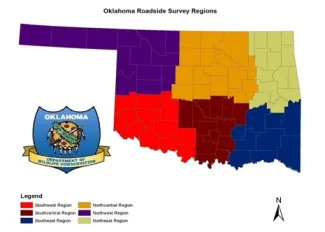
Figure 1.
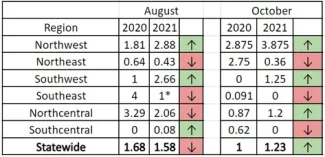
Table 1: Regional Survey Results 2020 and 2021.
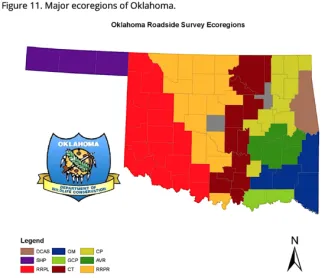
Figure 2.
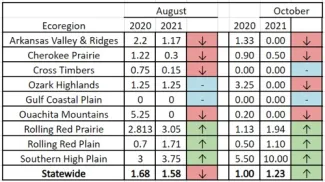
Table 2: Ecoregion Survey Results 2020 and 2021
REGIONAL AND ECOREGIONAL FINDINGS
Regionally, the northwest, southwest, and north-central regions showed an increase over the 2020 counts (Table 1). In August, only two regions of the state were up over 2020’s survey numbers. However, in October, three of the six regions are up going into the season. Figures 4-10 below show the average survey results for 1990-2021.
When we break down the statewide numbers by ecoregion, we are able to see what areas are producing better or worse year-to-year (Table 2/Figure 3). On an ecoregion basis, the Rolling Red Plain had the largest increase. By analyzing the data this way, we can also see that there are primarily three ecoregions driving the statewide average: Southern High Plain, Rolling Red Plain, and Rolling Red Prairie.
SEVERE WINTER STORM
2020 brought several challenges beyond the COVID-19 pandemic. While the eastern half of the state was seeing normal rainfall, the western half was battling drought. In February 2021, Oklahoma received a harsh winter storm with ice, snow, and severely cold temperatures. Due to that storm, we expected that our population going into spring was lower than normal. However, timely rains allowed for an outstanding crop of insects and forbs, and this allowed for a great nesting season. Even with those timely spring and summer rains, much of the state is currently battling some level of drought (Figure 13). The late winter storm also seems to have delayed spring wildlife activity; this was observed in pheasant and quail. According to data from the Game Brood Survey App created by Oklahoma State University and ODWC, it appears quail nesting season started in early June and carried on throughout the nesting season.
COLLECTING QUAIL WINGS
This year, ODWC is again collecting quail wings from public land birds to better evaluate our quail population. If you harvest a bird from a Wildlife Management Area that has a wing deposit box, please take the time to place one wing from each harvested quail (whichever is least damaged as long as only one wing per bird), fill out the envelope, and then place it in the box. The WMAs that will have boxes are Beaver River, Canton, Cooper, Cross Timbers, Kaw, Packsaddle, Pushmataha, and Sandy Sanders. Your participation in this data collection effort provides vital information about nesting success and timing, and helps improve the management of these game birds.
In summary, hunters taking to the field will likely find patches with fair quail numbers where reproduction was not as severely impacted by weather, and where habitat remains in favorable condition. Hunting will not be what it was at the last observed peak in production in 2016, but we expect hunters to find birds throughout the state. Quail season will open Nov. 13, 2021, and run through Feb. 15, 2022. Hunters may harvest 10 quail daily. For more regulations and other information, consult the Oklahoma Fishing and Hunting Regulations online at http://www.wildlifedepartment.com/hunting, on the Go Outdoors Oklahoma mobile app, or in print wherever hunting and fishing licenses are sold.
Ultimately, remember the outdoors are #AlwaysOpen! Work some ground, trust your dog, and make some memories!
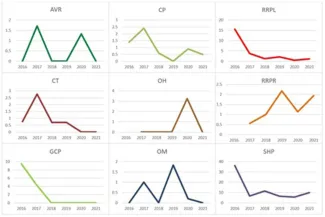
Figure 3: Quail/Route by Ecoregion from 2016-2021
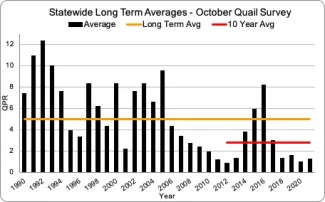
Figure 4: Statewide Long Term Averages
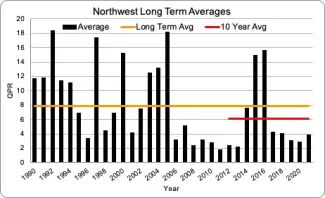
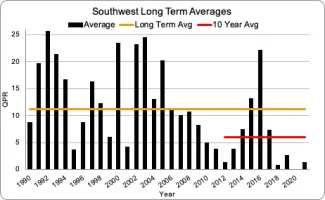
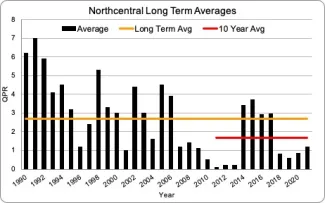
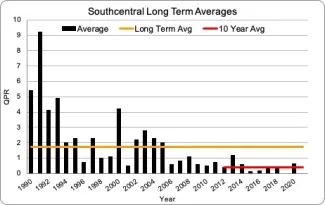
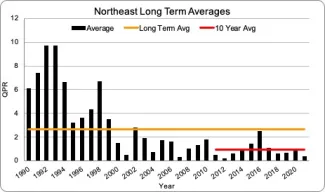
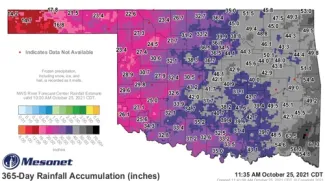
Figure 11: Rainfall totals for the last 365 days in Oklahoma (Source: Mesonet.org)
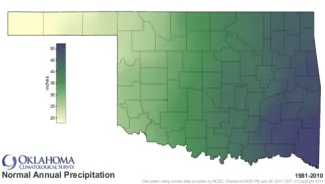
Figure 12: Average Annual Rainfall (Source: climate.ok.gov)
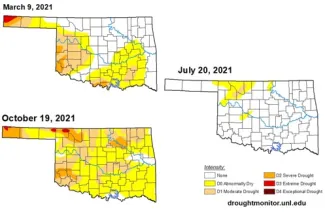
Figure 13: Comparison of Drought Conditions for 2021 (Source: Droughtmonitor.unl.edu)